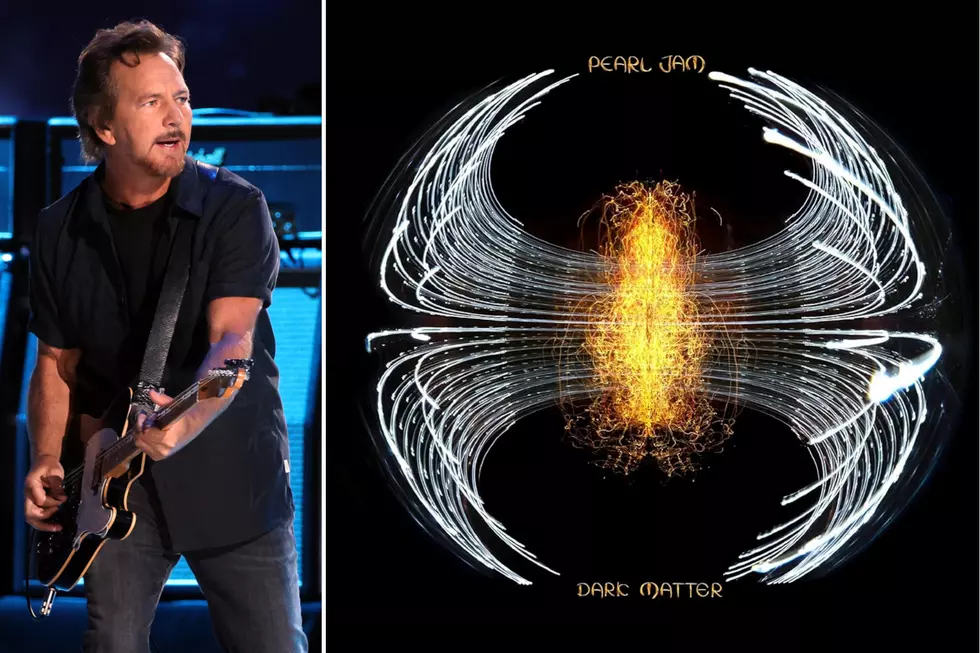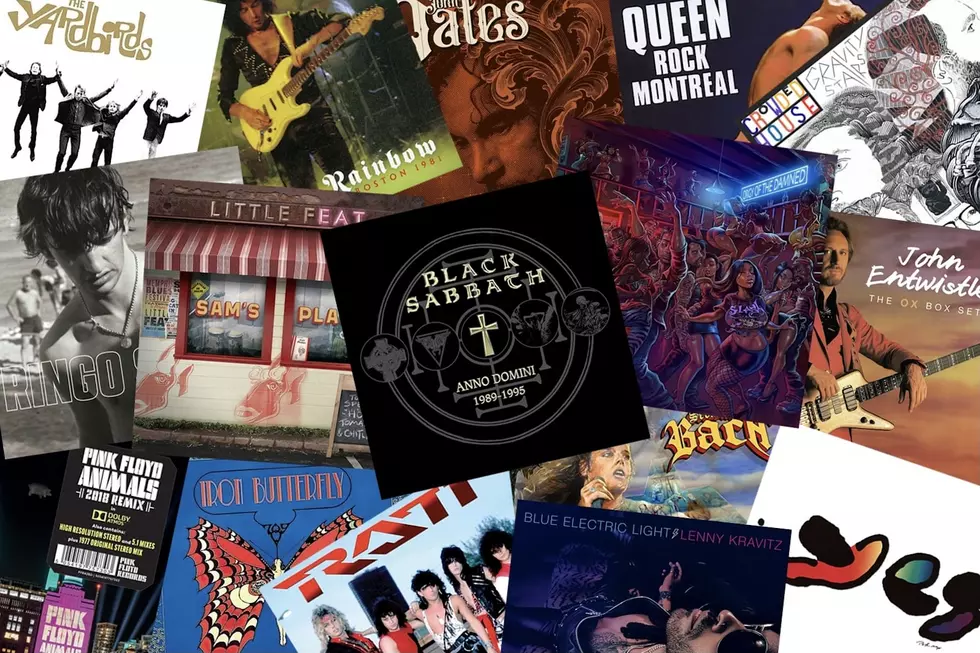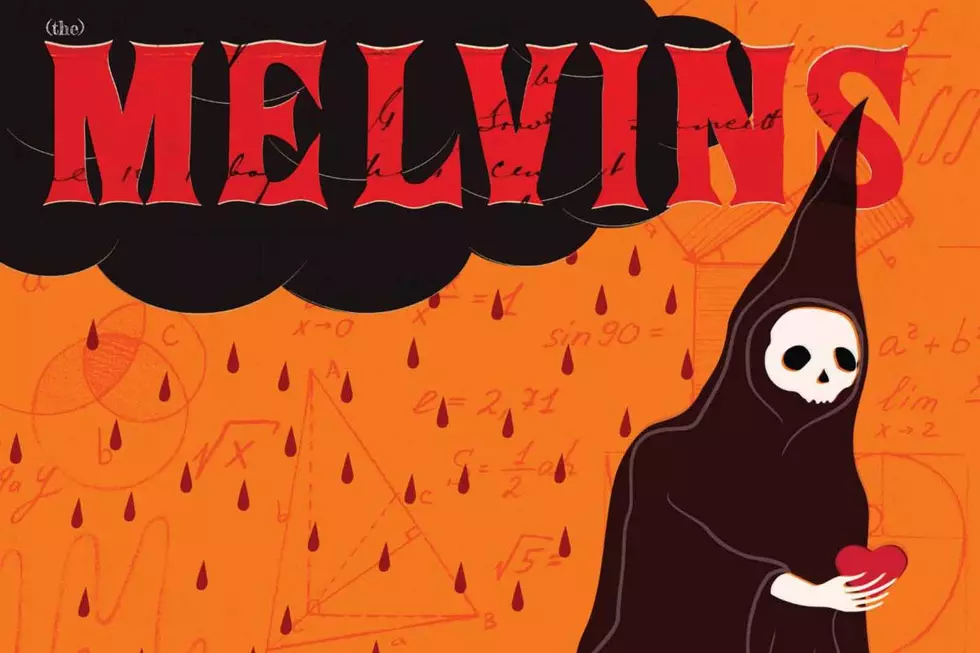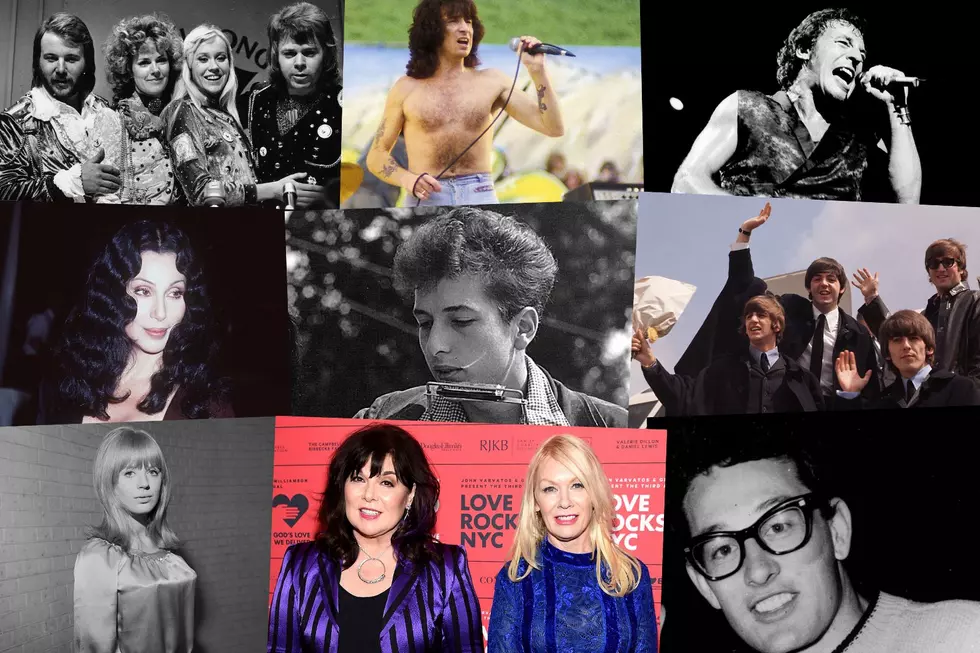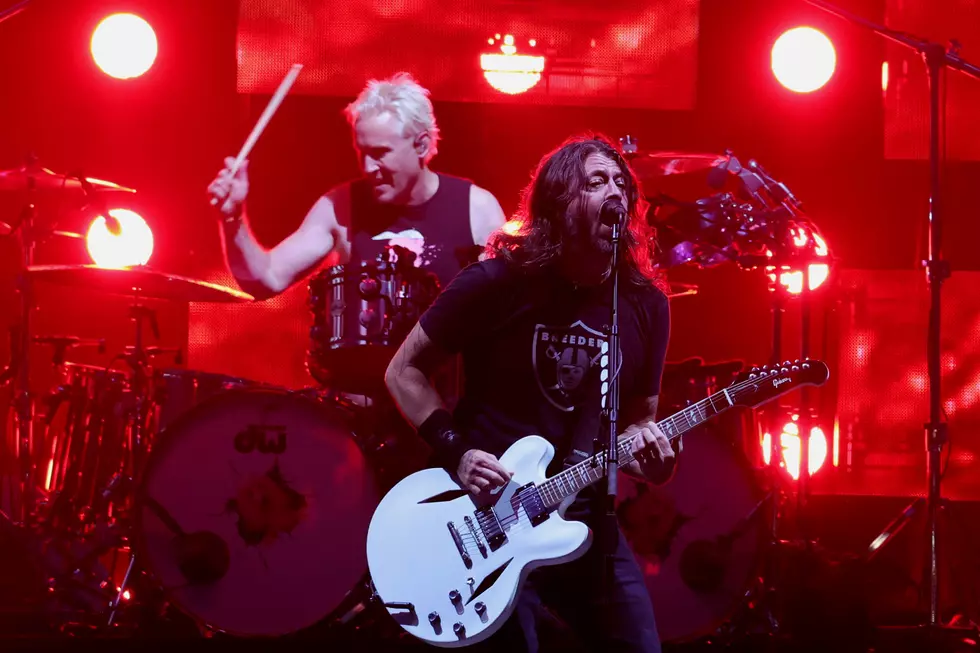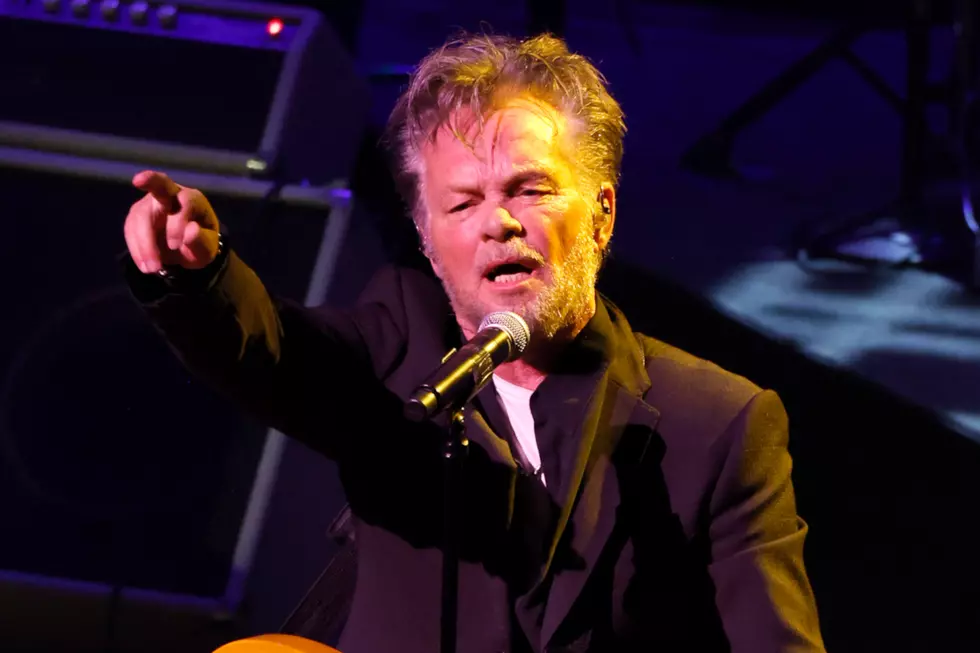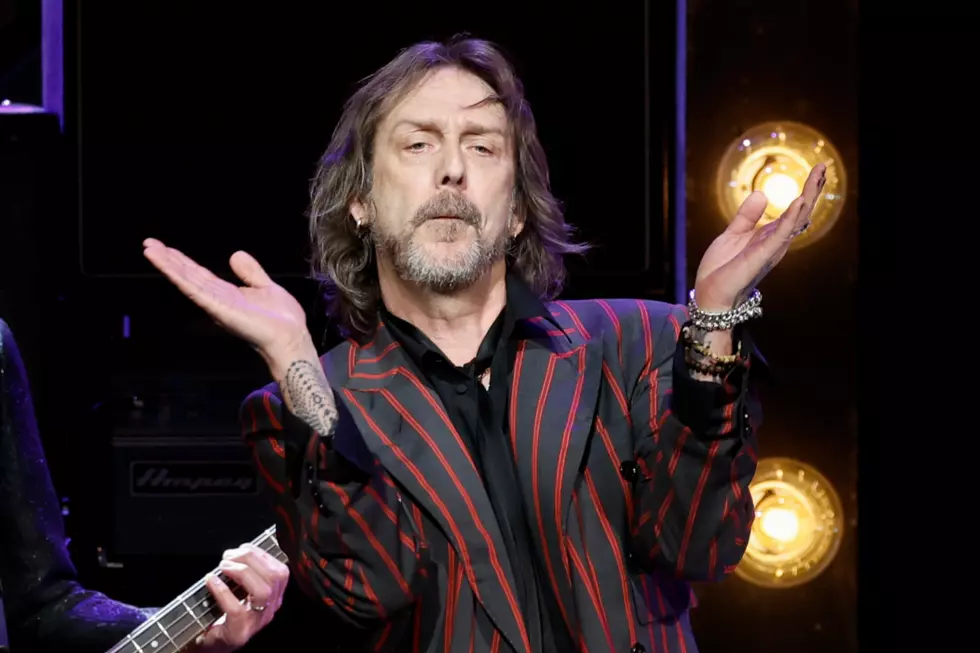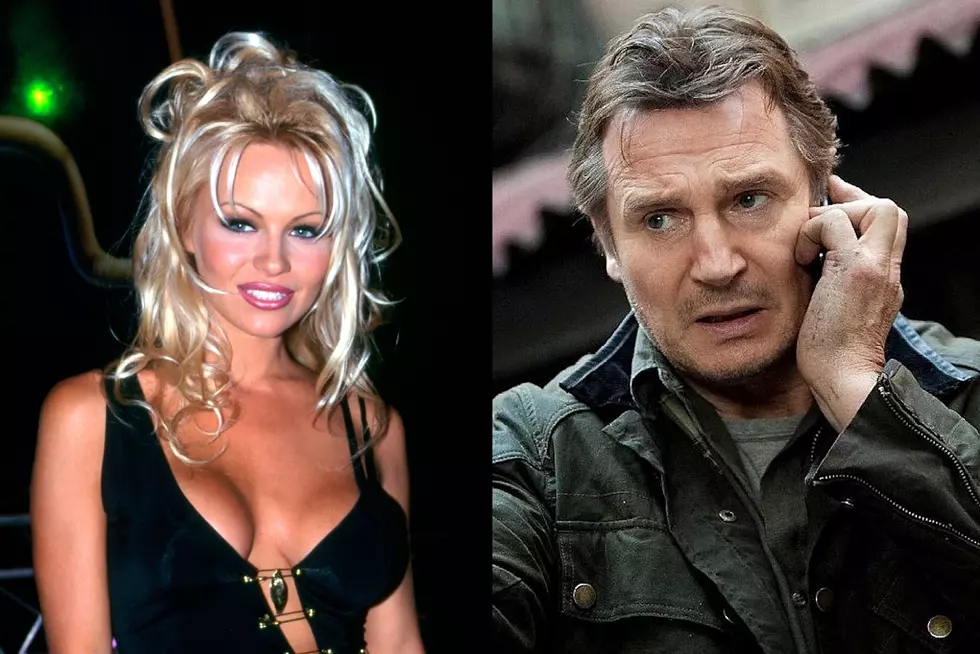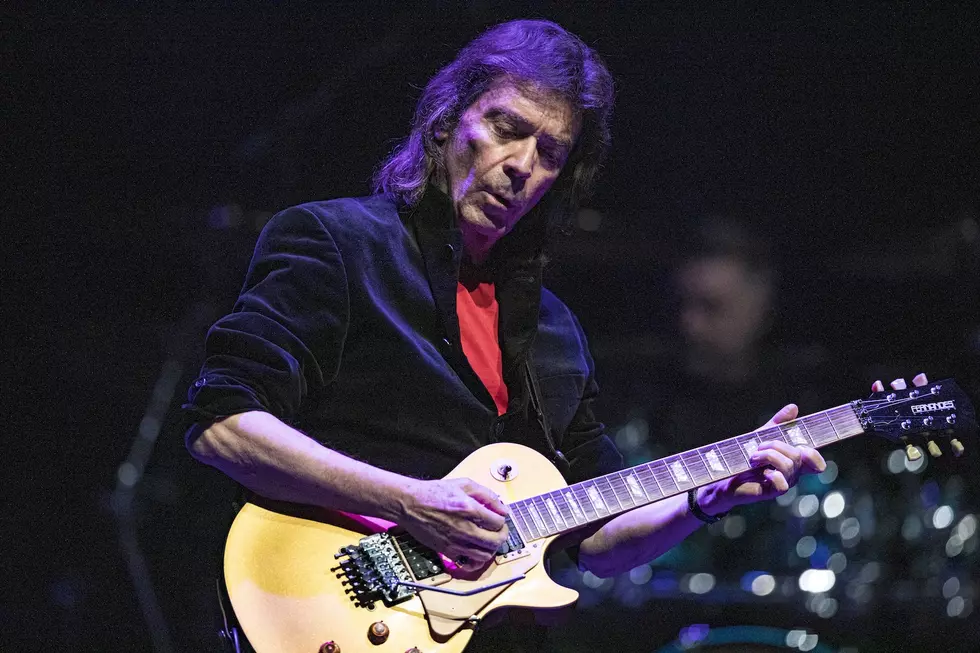
40 Years Ago: Van Halen’s ‘1984’ Sets a Sleek New Standard
It had been nearly three years since the release of a proper Van Halen record when 1984 kicked off the new year with a bang on Jan. 9, 1984.
The patchwork 1982 LP Diver Down didn’t really count, since the bulk of it consisted of covers, instrumentals and previously shelved tracks, leaving just two fresh compositions in “Little Guitars” and “The Full Bug.”
So, the slickly produced, keyboard-heavy and primed-for-mainstream 1984 was a surprise to many fans who last experienced Van Halen at full capacity on the unconventional and somewhat sinister Fair Warning. 1984 showed that Van Halen was no longer just a backyard party band, having evolved with the times and as musicians, and continuing to be artistically innovative while still appealing to the heavy metal parking-lot crowd that blasted tunes out of souped-up, small-block Camaros.
READ MORE: Top 10 Van Halen Keyboard Songs
Frustrated after having been strong-armed into making several compromises on Diver Down, 1984 is also where Eddie Van Halen began to take control of the band. He had some major assistance from engineer Donn Landee, who quickly got on board with the guitarist’s vision for 1984. Landee served as an accomplice behind the controls, with longtime producer Ted Templeman having a contrasting idea of what direction the project would go.
Landee was also an integral part in the building of Eddie Van Halen’s home studio, 5150, where 1984 and all subsequent Van Halen records would be recorded. Eddie would even say during one interview that the LP was “Phase One of Donn and Ed.”
Still, having the home-court advantage didn't prevent the struggle to get his perspective heard. He fought to incorporate keyboards into the forefront of the music, especially with frontman David Lee Roth. Tensions had been mounting in the Van Halen camp during the recording of 1984, reaching an all-time high when they were on the road supporting the album. Yet their popularity and record sales rose concurrently.
The North American arena tour consisted of 101 dates between January and July, many including two- and sometimes three-night stands in several cities. According to Eddie, the jaunt required eight trucks, to transport the stage and equipment, including a staggering 2,000 lighting rigs, part of which would flash “1984” as the show drew to a close.
When deals for top-tier sponsorship fell through, they co-opted Western Exterminator Company's “Little Man” mascot, a cartoon of a top-hatted, snappily dressed man brandishing a large mallet behind his back that was informally dubbed the “Hammer Guy” by fans who witnessed it as the backdrop each night. The record sat at No. 2 on the Billboard albums chart for five weeks, stymied by Michael Jackson’s behemoth Thriller LP (which featured "Beat It" with Van Halen on lead guitar), and eventually went diamond for selling more than 10 million copies.
Here's a track-by-track breakdown of the landmark 1984 album.
“1984”
Instrumentals were nothing new for Van Halen. They had performed at least one on each of their albums up to this point – and three on Diver Down – but never opened an LP with one. More audacious is the minute-plus track's otherworldly synthesizer, which was culled from 45 minutes’ worth of noodling by Eddie that Landee had secretly recorded.
Unlike the murky synthesized drone of “Sunday Afternoon in the Park” from Fair Warning that quickly turned into the ferocious shredfest “One Foot Out the Door,” “1984” served as a build-up to the next song on the LP. Though most people saw it as not much more than an eerie -- and guitar-free -- intro to “Jump,” the song signaled a major shift in the sound of the group and who was in command going forward.
“Jump”
Had Van Halen not already been an established act on radio by 1984, “Jump” would have been their one-hit-wonder song. It’s the perfect blend of '80s synthesized confection and soaring rock 'n' roll, with keyboard and guitar solos that sound like nothing they had done before or since. But according to Eddie Van Halen, the rest of the group wasn't all that impressed with the song – at first. “Dave said that I was a guitar hero and I shouldn’t be playing keyboards,” Van Halen recalled in 2014. “My response was, If I want to play a tuba or Bavarian cheese whistle, I will do it.”
The guitarist was proven right commercially: “Jump” was their first and only No. 1 single, topping the Billboard Hot 100 for five weeks, with a low-budget video in heavy rotation on MTV. Depending on what source you believe, it cost either $600 or in the neighborhood of $5,000. Reams of footage were shot of Roth performing circus-like high jinks – which would later be re-purposed for the “Panama” video – but the decision was to cut the material down to a simple performance piece, shot on hand-held 16mm cameras at the Complex, a small theater in Hollywood's Santa Monica Blvd. “We didn’t want any of the stuff, like, standing on the edge of a cliff with a picture in the background or fireballs thrown at you,” drummer Alex Van Halen told Rolling Stone. “We just wanted personality.”
“Rather than doing something bigger than life, which is how Van Halen was perceived, we wanted something very personal,” director Pete Angelus said in I Want My MTV: The Uncensored Story of the Music Video Revolution. “Let’s see if we can get Edward to smile. Of course, we also had to appease Dave, who wanted to throw his karate tricks into the equation. I think we spent less money making ‘Jump’ than we did on having pizzas delivered to the set of ‘Hot for Teacher.’”
The small-scale maneuver paid off, with Van Halen snagging three nominations and a win for Best Stage Performance in a Video at the first-ever MTV Video Music Awards in 1984.
Live on the 1984 tour, and for a brief tenure in Sammy Hagar’s inaugural outing with the band in 1986, Eddie Van Halen would perform “Jump” entirely on keyboards, mimicking the guitar solo on them. Hagar refused to sing the track in concert, though, resorting to having the audience do a mass sing-along or bringing a guest onstage to handle the vocals. So the song was shelved until the For Unlawful Carnal Knowledge trek in 1991, when the Red Rocker’s stance on Roth material softened slightly. By then, Eddie flipped the switch, playing guitar during the song with a pre-recorded keyboard track, something he did until he died in 2020.
“Panama”
The second-catchiest number on 1984 was instant reassurance to anyone who thought Van Halen succumbed completely to the decade’s growing keyboard craze. The fast-paced guitar licks shake into overdrive, fitting for a song about a car ... well, about a car and sex. Roth claims he was questioned about the themes of his lyrics being solely about nonstop partying, sex and cars, when it dawned on him he hadn’t actually written about a car and set out to do so. “Panama” was the outcome, full of mischievous double entendres about pistons popping and shiny machines. The song's breakdown featured a cameo by Eddie’s 1972 Lamborghini Miura S, which he brought to the studio to lay down the rumble of the engine.
“They thought we were nuts to pull up my Lamborghini to the studio and mic it,” he said. “We drove it around the city, and I revved the engine up to 80,000 rpm just to get the right sound.”
Parts of the song's performance-clip video were filmed on the second of two nights at Philadelphia's Spectrum in March 1984. Discarded ancillary footage from the “Jump” shoot, with Roth cruising down the road on a motorcycle and goofing off with Alex Van Halen in his customized 1951 Mercury convertible was also included. Like “I’ll Wait” before it, “Panama” peaked at No. 13 on the singles chart, and the video went into heavy rotation on MTV.
“Top Jimmy”
The shortest song, next to the instrumental title track, “Top Jimmy” was a curious number. Jimmy was a real person -- James Koneck, who worked at the Top Taco stand outside A&M Records in Hollywood by day and fronted Top Jimmy and the Rhythm Pigs at night. Roth had struck up a friendship with Koneck and joined him onstage a few times to jam.
The singer's tale of the man who drove all the women crazy took over what was initially an instrumental piece called “Ripley,” which was named for guitarist Steve Ripley, who created a unique stereo guitar for Eddie that allowed for individual placement of each string across left and right channels.
Eddie used his name again for the song “Ripley” from his score to the 1984 film The Wild Life. He also reused the music for the song “Blood and Fire,” which appeared on Van Halen’s A Different Kind of Truth in 2012.
“Drop Dead Legs”
Drawing inspiration from AC/DC’s "Back in Black," Eddie Van Halen delivered an airy and sharp riff that carries through the song until it ends with a boisterous and bluesy guitar solo over an unanticipated and lengthy coda. The musical grind of “Drop Dead Legs” is a perfect fit to Roth’s lyrics on the age-old subject matter of losing one’s mind due to a woman’s sex appeal.
Closing out the first side of 1984 following the massive hits “Jump” and “Panama,” the song ended up kind of lost in the shuffle but experienced a rebirth on the band’s 2015 shows, where it was played live for the first time and on every night of the tour.
“Hot for Teacher”
The second side of 1984 erupted with what almost sounds like dozens of fireworks being shot into the sky. In reality, it was Alex’s assemblage of four bass drums used to create the sonic blitz. “Hot for Teacher” is one of the album's centerpieces, an amalgamation of Eddie’s non-stop fretwork shffle, Roth at his most comedic and a relentless thump of the bottom end.
It made sense that the song's video was one of the group's most conceptual, with younger versions of the band members looking a lot like their adult selves, getting into trouble, driven mad by the opposite sex and living for the time of the day when partying would commence. The clip's iimages of scantily clad women -- in the teacher and disciplinarian roles -- drew criticism, as did the bullying of the video’s antagonist, Waldo, who does pretty well for himself by the time the video ends.
Seeing that it was another round-the-clock MTV fixture, it’s surprising to note that “Hot for Teacher” stalled at No. 56 on the chart. But maybe it came down to timing, since it was the fourth and final single from 1984 and released after the tour ended.
“I’ll Wait”
Another point of contention between Templeman and Eddie, “I’ll Wait” had the producer getting under the guitarist’s skin in the studio by humming Argent’s 1972 hit “Hold Your Head Up” whenever he referred to the song. Roth hit a wall in composing lyrics, so Templeman brought in former Doobie Brother Michael McDonald, who was in the midst of a successful solo run, to assist in fleshing out the track's words and portions of the melody.
"Ted Templeman called me up and said, 'Hey, these guys have a track and they need some lyrics, so I mentioned you could do it and they said fine, so why don’t you come down?'" McDonald told UCR in 2014. "He sent me the track, and I got some ideas going so I’d have something when I got to the studio."
Though he and Van Halen collaborated on “I’ll Wait,” McDonald’s involvement surprised fans over the years, because his name was erroneously left off the credits on multiple pressings of the album before it was finally corrected on the 2000 remaster.
That wasn’t the only mistake regarding the song: Alex’s drum fill before the first verse was a gaffe Eddie wanted to leave in. “It’s one of my favorite parts of the song," Eddie recalled. "Al hit the hi-hat instead of the cymbal. The only way we could record in that room was to have Al play just the drums and then later overdub the cymbals. He just forgot to hit the cymbal. It reminds me of Ginger Baker on “White Room,” where Ginger does a similar thing on the first verse.”
“I’ll Wait” was released in the spring of 1984 as the second single from the record, and even without a video, it still managed to spend 14 weeks on the Hot 100, topping out at No. 13 in early June.
“Girl Gone Bad”
The first hints of “Girl Gone Bad” came in 1982 and 1983, during live jams between the Van Halen brothers as part of the “Somebody Get Me a Doctor” breakdown. The throwaway bit slid into a full-band take of Cream's “I’m So Glad," allowing Eddie to indulge in one of his favorite songs by his No. 1 guitar influence, Eric Clapton. (The two songs are phonetically similar and have the same number of syllables.)
Eddie wrote the track while “humming and whistling” into a micro-cassette recorder in a hotel room closet as his then-wife Valerie Bertinelli was sleeping, piecing it all together in the studio later. The result features some of Van Halen’s most searing guitar work, including a frenetic solo that, like the rest of the piece, teeters dangerously on edge without ever going overboard.
“House of Pain”
"House of Pain" was one of the oldest songs in Van Halen’s inventory at the time, dating back to 1975. Eddie even used to perform “Eruption” in the middle of the song live for a short period (as noted in the book Van Halen Rising). The track was part of the 1976 demos produced by Gene Simmons, and featured bursts of car horns throughout with one long salvo to end the song and fade out.
That closing was then appropriated to open the band's 1978 debut album before stopping hard against Michael Anthony’s iconic bass line that opens “Runnin’ With the Devil.” “The only thing that’s the same is the main riff,” Eddie said. “The intro and verses are different, I guess because nobody really liked it the way that it originally was.”
When it came time to record “House of Pain” for 1984, it was changed up lyrically, becoming an ode to BDSM. It lost none of its ferocity, though, closing out the album on a hard and heavy note.
Rockers Whose Bands Tried to Erase Them
Gallery Credit: Nick DeRiso
Think You Know Van Halen?
More From Ultimate Classic Rock
